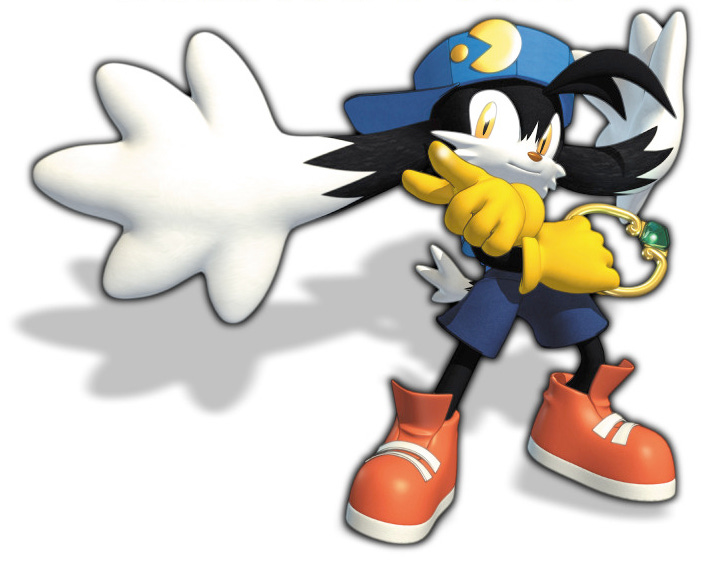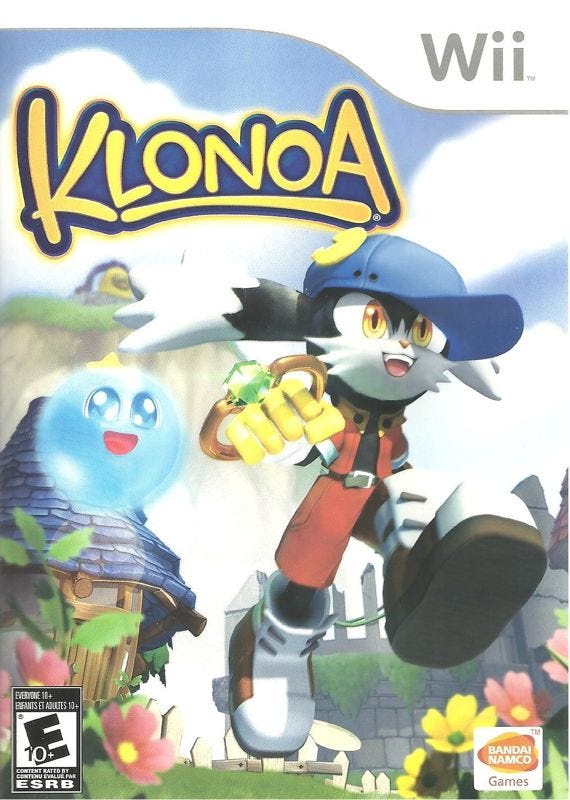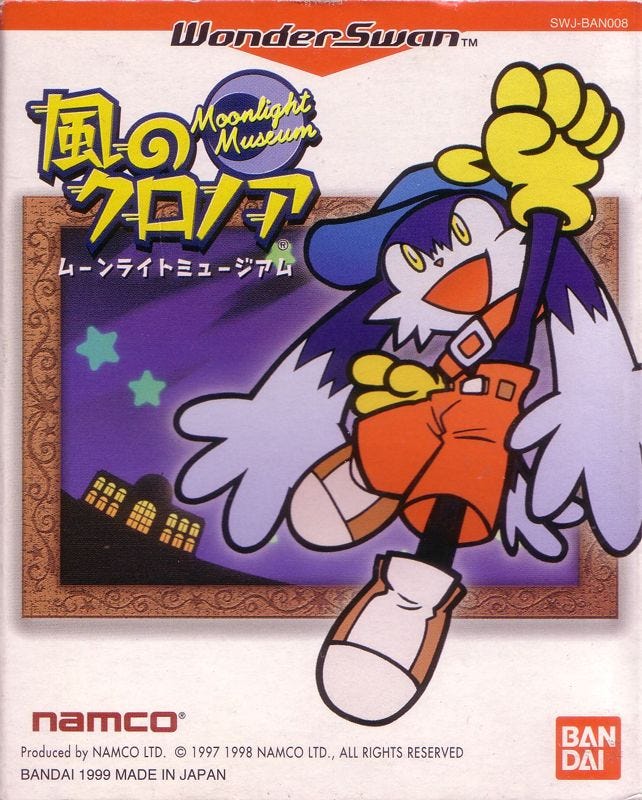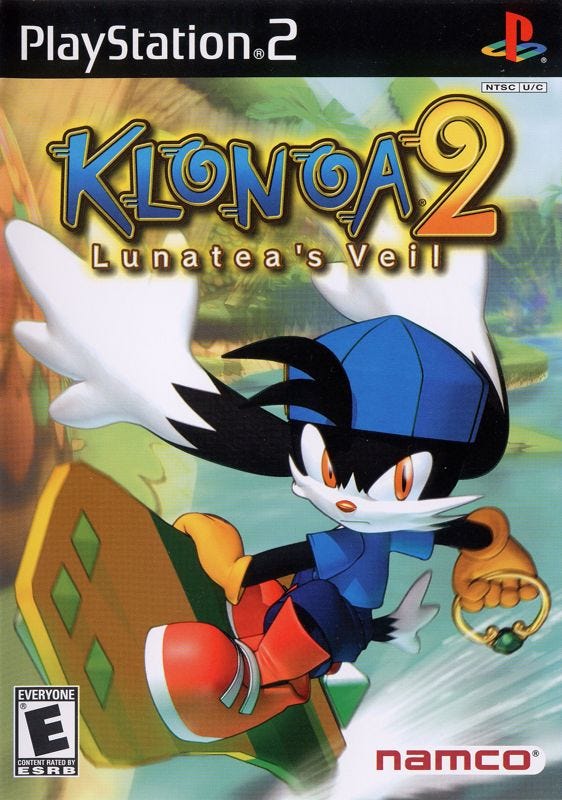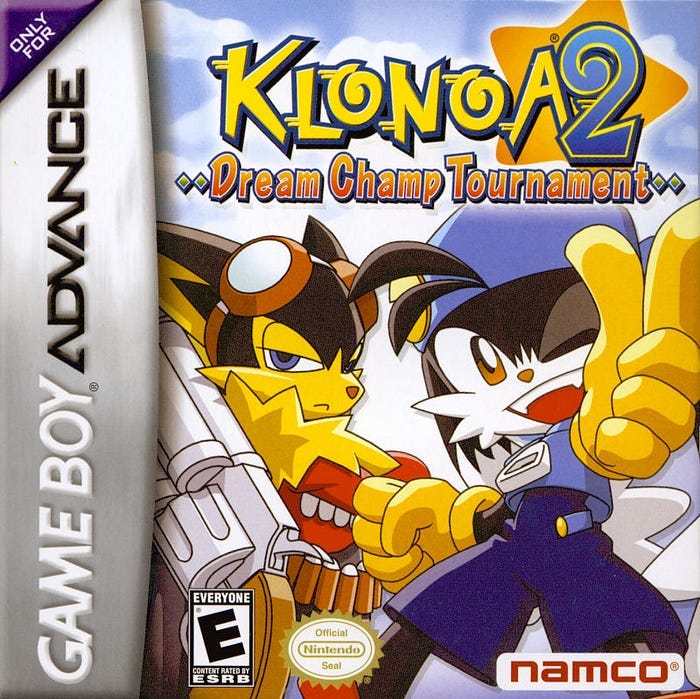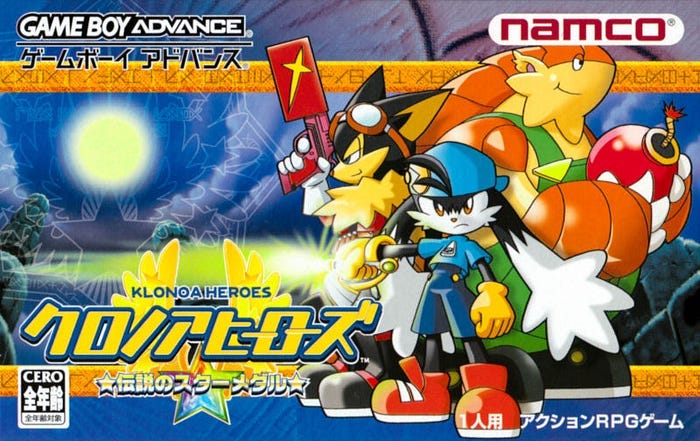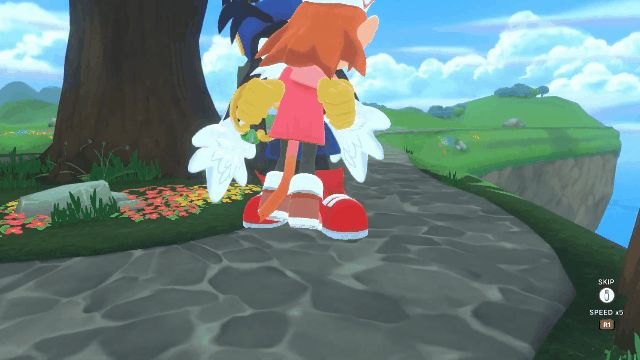Greetings, earthlings. I’m Cory Roberts, also known as Samurai Cory. I’m going to cheer everyone up after the Trump/Vance election disaster last week, and Project 2025 might affect the (indie) video game industries, including the art and webcomic communities that may face censorship in the US and possibly Canada.
Klonoa is a platform video game series created by Bandai Namco (Namco at the time) in 1997. The series stars the titular character, Klonoa, who has features of a dog, cat, and rabbit but is not explicitly any particular animal. Voice acting for Klonoa in most appearances is provided by Kumiko Watanabe, although Eric Stitt has provided English dub performances in the Wii remake of Klonoa: Door to Phantomile, and by an uncredited voice actor in Klonoa Beach Volleyball. He has Namco's mascot Pac-Man on the side of his blue hat.
The games are set in different worlds, though the primary and known ones are Phantomile and Lunatea. It revolves around Klonoa and how he, the Dream Traveler, must save whatever world he is in from peril. Along the way, he makes new friends and enemies, some of them becoming recurring characters. The game is an early example of a side-scrolling 3D game. It is an adventure and puzzle type of game. The main gameplay feature involves using Klonoa’s ring and “Wind Bullets” to inflate enemies, which can be thrown at other objects or the ground, giving him a boost upwards, allowing him to double jump.
Klonoa: Door to Phantomile
Known in Japan as Kaze no Klonoa: Door to Phantomile (風のクロノア door to phantomile, “Klonoa of the Wind: Door to Phantomile”)
Release dates:
🇯🇵 December 11, 1997 (December 4, 2008 for the Wii version)
🇺🇸🇨🇦 March 10, 1998 (May 5, 2009 for the Wii version)
🇪🇺 June 5, 1998 (May 22, 2009 for the Wii version)
The first order of business is Klonoa: Door to Phantomile, which was released in 1997 for the PlayStation. The story follows Klonoa and his friend Huepow (“Hewpoe” in the Wii version) in their efforts to save the dream world of Phantomile from an evil spirit intent on turning it into a world of nightmares. The player controls Klonoa through a 2.5D perspective; the stages are rendered in three dimensions, but the player moves along a 2D path. Klonoa can grab enemies and throw them as projectiles or use them as a jump boost to navigate through the stages.
The game was directed by Hideo Yoshizawa, who conceptualized the setting as a dream world that could appeal to children and adults. The Klonoa character was designed early on, and the environments and other characters were designed around him. Door to Phantomile received positive reviews, being praised for its clever platforming, impressive graphics, and cutscenes. Some critics thought it lacked certain gameplay innovations and was excessive in its Japanese cuteness. In retrospect, it is considered one of the best 2.5D platformers and PlayStation games.
The Wii remake of the first game has fully 3D graphics, additional content, and gameplay changes, such as choosing the voice language between the original Phantomile and the English version, though the gameplay remains the same.
Klonoa: Moonlight Museum
風のクロノア ムーンライトミュージアム, (Kaze no Kuronoa Mūnraito Myūjiamu, Klonoa of the Wind: Moonlight Museum)
Release dates:
🇯🇵 May 20, 1999
🇺🇸🇨🇦 Never released in the region
🇪🇺 Never released in the region
This Japan-only game was released on the Japan-only WonderSwan handheld game console in 1999. It is the first handheld game in the Klonoa series to place him in a fully two-dimensional world and established the system that the Game Boy Advance titles later used.
Klonoa 2: Lunatea’s Veil
Known in Japan as Kaze no Klonoa 2: Sekai ga Nozonda Wasuremono (風のクロノア2 世界が望んだ忘れもの); “Klonoa of the Wind 2: The Lost Article That the World Wished For”
Release dates:
🇯🇵 March 22, 2001
🇺🇸🇨🇦 July 25, 2001
🇪🇺 November 9, 2001
Klonoa 2: Lunatea’s Veil, the direct sequel to the first game, was released for the PlayStation 2. The game puts players in the role of Klonoa, who, along with a new cast of friends, has stumbled into another adventure, this time to save the world of Lunatea and help unveil the mysteries of the enchanted world. The game features gameplay inspired by the original Klonoa, with 2D side-scrolling in a 3D-rendered environment. Klonoa’s equipped weapon is a crystal ring that contains the life of Lolo inside, helping him.
The biggest change to Klonoa’s design came in his third appearance in this game, where he went through a radical wardrobe change, gaining a blue shirt with a large zipper pin, dark blue shorts, and a blue cap. His face was altered a bit as well and gave more focus to the fur around his mouth. Klonoa later gains his trademark red high-top sneakers with the tongues that always stick out as he retains his yellow gloves. His Klonoa 2 outfit in the Wii remake (referred to as the “Zipper Suit”) is also unlockable, along with his first game’s outfit.
The game introduces Lolo, Klonoa’s childhood friend, who is a priestess-in-training who meets up with Klonoa upon his arrival in Lunatea. Like Huepow, she can transport him inside Klonoa’s ring to let him perform the Wind Bullet. Lolo’s talkative friend is Popka (Wasabi Mizuta), who resembles a dog with pointed features and a pair of green jewels for eyes. Tomoko Kawakami, the character’s voice actress, lost the battle with ovarian cancer on June 9, 2011, around 11 years after the game’s release, although the remake of the second game in the Phantasy Reverie series uses recycled voice lines from the original games.
Shippuu Tengoku Kaze no Klonoa is a two-volume-long comedy/slapstick manga that, unlike the somewhat more serious tone from the video games, features Klonoa as a good-natured, clumsy, and dim-witted kid obsessed with being a superhero. His attempts to do good deeds tend to fail or cause the opposite effect due to his being overly enthusiastic, his habit of jumping to conclusions, and, sometimes, just because of bad luck. The volumes were released in 2002 and 2003.
Klonoa: Empire of Dreams
Known in Japan as Kaze no Klonoa: Dreaming Empire (風のクロノア 夢見る帝国, Kaze no Kuronoa Yumemiru Teikoku)
Release dates:
🇯🇵 July 19, 2001
🇺🇸🇨🇦 September 11, 2001
🇪🇺 March 29, 2002
2001’s Empire of Dreams is a two-dimensional adventure game with puzzle elements that takes place in the new realm in the Klonoa series, the Empire of Jillius. The game was released during the September 11 attacks, which caused the game to face some delays. The game is developed by still-active Now Production, a Japanese video game developer developing various games for major Japanese companies, including Bandai Namco, Hudson Soft (absorbed by Konami in 2012), Capcom, Activision, Taito, Konami, Sega, and Nintendo. The game would later make an appearance at the 2001 Tokyo Game Show that same month, which included an early playable demo.
Klonoa Beach Volleyball
Known in Japan as Klonoa Beach Volley: Saikyō Team Ketteisen! (クロノアビーチバレー 最強チーム決定戦!, Kuronoa Bīchi Barē: Saikyō Chīmu Ketteisen!, “Klonoa Beach Volleyball: Strongest Team Playoff!”)
Release dates:
🇯🇵 April 25, 2002
🇺🇸🇨🇦 Never released in the region
🇪🇺 September 20, 2002
Klonoa Beach Volleyball was limited to Japan and Europe, with the European release notably featuring the characters speaking in multiple languages, such as English, Spanish, French, Italian, and German. This is one of the only Klonoa titles to feature a multiplayer mode, allowing up to four players to compete in pairs against the other team using a multitap.
Klonoa 2: Dream Champ Tournament
Known in Japan as Kaze no Klonoa G2: Dream Champ Tournament (風のクロノアG2 ドリームチャンプ・トーナメント, Kaze no Kuronoa G2 Dorīmu Chanpu Tōnamento)
Release dates:
🇯🇵 August 6, 2002
🇺🇸🇨🇦 February 22, 2005
🇪🇺 Never released in the region
Dream Champ Tournament, the third Klonoa handheld game, retains many of the gameplay elements of the previous titles while adding in a few of its own. The game begins with a flashback to when Klonoa defeated the King of Despair before jumping to the present day, where Klonoa receives an invitation letter that floats from the sky telling him that he has been selected to compete in the prestigious “Dream Champ Tournament” among other accomplished adventurers for the title of “Greatest Hero” as well as a cash reward.
Klonoa Heroes: Densetsu no Star Medal
クロノアヒーローズ 伝説のスターメダル (Kuronoa Hīrōzu: Densetsu no Sutā Medaru, “Klonoa Heroes: Legendary Star Medal”)
Release dates:
🇯🇵 December 13, 2002
🇺🇸🇨🇦 Never released in the region
🇪🇺 Never released in the region
This Japan-only action RPG game, released in late 2002, is the first game in the Klonoa series to combine both standard action-gaming elements with role-playing features.
I hope this post has eased the election blues (aside from planning to consider a permanent US exit), and I hope you left X (formerly Twitter) for Bluesky since X has forced the creators’ content to train generative AI, as this retrogaming blog does not use AI-generated images of any kind. I also hope you made your last purchases before you enjoy the holidays with your family and friends.
This was originally posted on Medium on November 18, 2017 while I’m migrating some of the posts from Medium to Substack.





